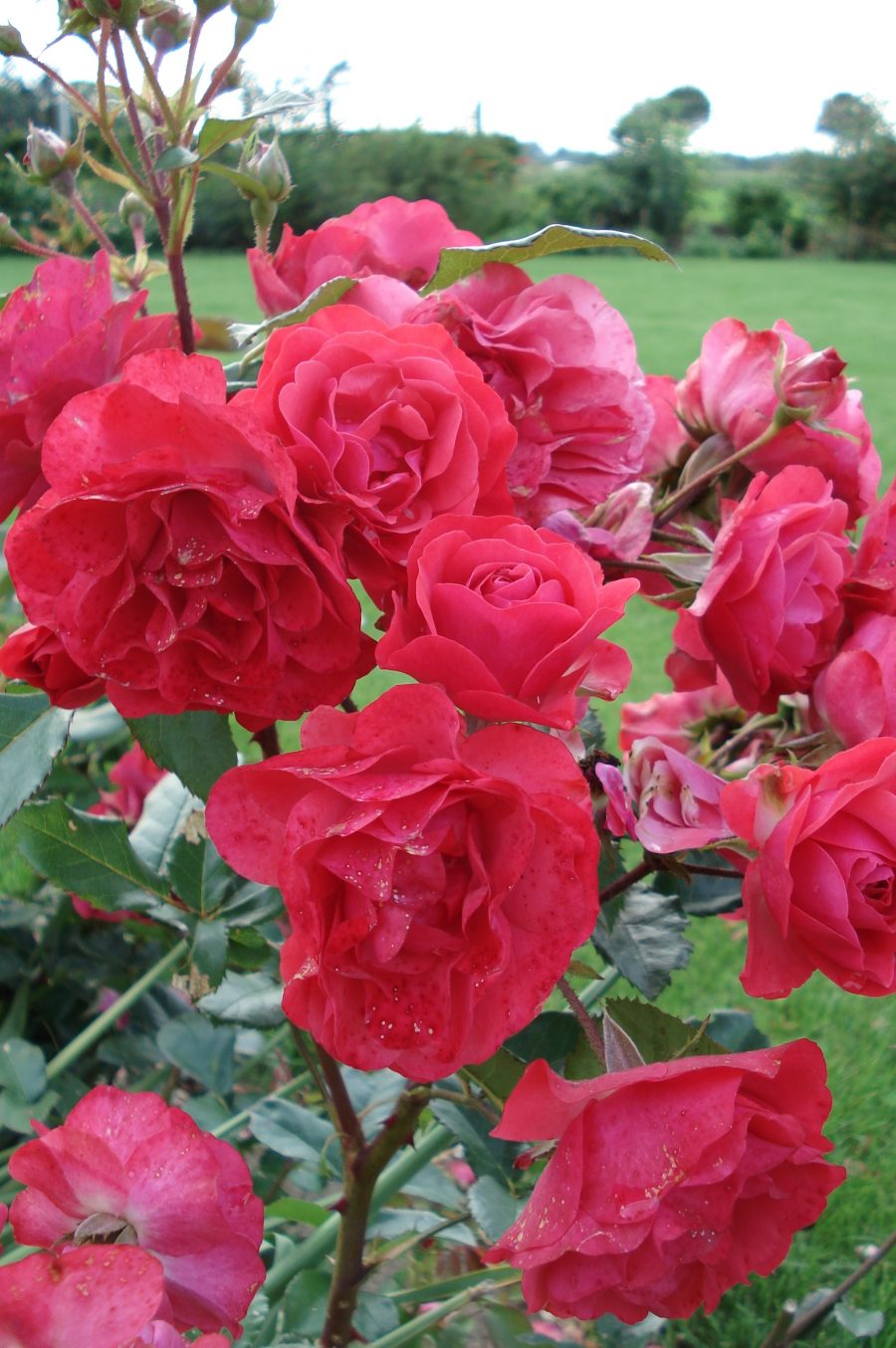Press release New rose genome provides insight into diversity and important flower and bloom characteristics

Another important step has been taken in the genetic research of the rose. Barely a month after a first team of researchers unraveled the genome of the rose and could link genes to odor and color variation, a second team of scientists managed to do the same for thorn density and important flower and bloom characteristics.
Whether this means that there will soon be roses without thorns on the market, is still unclear. It is clear that the new reference genome that is now publicly available will speed up the breeding of new rose cultivars.Flanders Research Institute for Agriculture, Fisheries and Food (ILVO) participates in this research and also has a team of rose breeders. Leen Leus (ILVO): "ILVO has a breeding program in garden roses with a history of more than 50 years. In that time, we have introduced about 80 cultivars onto the market. We also have years of experience in research to support breeding, especially regarding disease resistance. The publication of this reference genome will be used to identify genes for disease resistance and will lead to concrete applications in breeding."
The results of the research will be published on 11th of June 2018 in Nature Plants.

Rosa chinensis 'Old Blush'
By combining the latest DNA sequencing techniques with cytogenetic analyses and bioinformatics, an international team led by the French INRA in Angers has succeeded in obtaining a new quality reference genome of the rose. This genome differs slightly from the genome that was published earlier this month by another French team. The new sequence provides insight into the diversity of the rose genome and highlights the background of important plant characteristics typical of roses, such as the number of thorns, the number of petals and continuous flowering. This makes it easier for breeders to identify the genes that are responsible for the desired characteristics, which considerably speeds up the breeding of new rose cultivars.
Publishing of two papers by two teams on similar subjects with one month’s time is quite remarkable. It requires a great deal of expertise and knowledge of the latest biotechnological techniques, because the rose does not like to reveal its secrets. The chromosomes are small and difficult to analyse. To get the job done, the genome consisting of 44,000 genes was first 'unpacked' and then 're-packed' and assembled into 7 pseudomolecules, representing the 7 chromosomes of the rose. This allowed scientists to finally read the genome and understand the story of the plant behind it.
Several researchers from ILVO were involved in that research. They mainly provided expertise in the field of genetic markers that link the characteristics of the plant to locations in the genome. Tom Ruttink (ILVO): "At ILVO we studied the breakdown of characteristics in cross-breeding populations and helped identify genes that control these characteristics. ILVO also has a lot of expertise in cytogenetics in roses. Through cytogenetic techniques we were able to link physical positions on the chromosomes to specific sequences in the genome, such as the centromeres. These are important structural regions of the chromosomes, which are difficult to analyze."
In addition to insight into the diversity of the rose and its flower characteristics, the study provided new insights into the relationship of the rose with related crops such as strawberry. For example, both roses and strawberries have genotypes that bloom only once, in addition to those with continuous flowering. Now that it is known which gene determines flowering in rose, through comparative genome research this knowledge can be transferred to strawberry and used in breeding.
Because of its economic, cultural, esthetic and symbolic value, the rose is one of the most important ornamental plants in the world. No other crop has so many cultivars on the market. The rose whose genome is now known is Rosa chinensis 'Old Blush' - an old Chinese rose that is an important ancestor of the modern rose. ‘Old Blush’ introduced continuous bloom into the modern rose.
In Flanders, some garden rose breeders are active together with ILVO. Cut rose cultivation is rather limited here, however. Garden roses are grown by tree nurseries, and only a few specialize in garden roses.
Publication: A high-quality genome sequence of Rosa chinensis to elucidate ornamental traits - Nature Plants
http://dx.doi.org/10.1038/s41477-018-0166-1
Partners: the team consisted of 40 scientists from 6 countries: INRA Agricampus-Ouest and University of Angers (France), ILVO (Belgium), Russian State Agrarian University-Moscow Timiryazev Agricultural Academy (Russia), Wageningen University & Research (The Netherlands), Leibniz Universität Hannover (Germany), Osaka Institute of Technology (Japan), Institut de Recherche en Horticulture et Semences (France)


